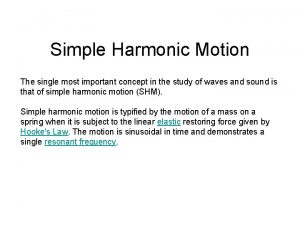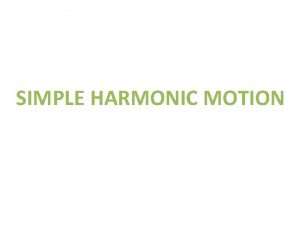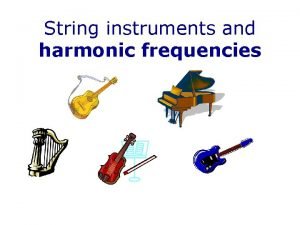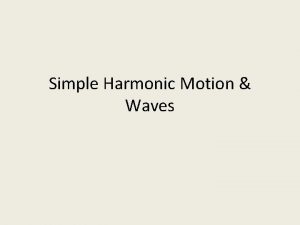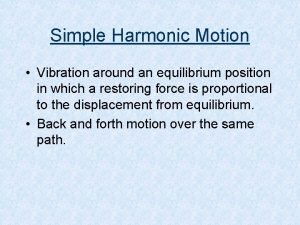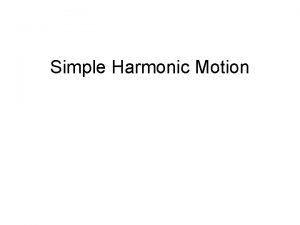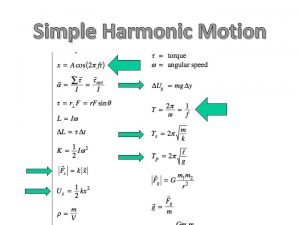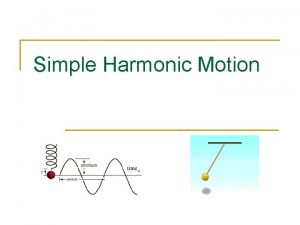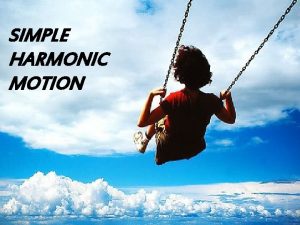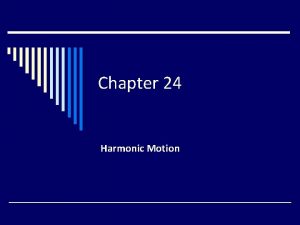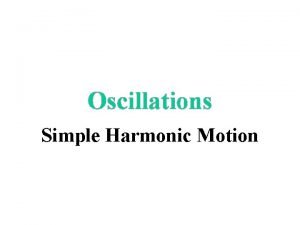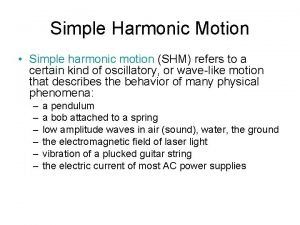SIMPLE HARMONIC MOTION DEFINITION ENERGY TRANSFER As the







- Slides: 7

SIMPLE HARMONIC MOTION

DEFINITION •

ENERGY TRANSFER • As the object oscillates it will exchange kinetic energy and potential energy. • At the midpoint, kinetic energy will be highest and potential energy lowest. • At maximum displacement (the AMPLITUDE) potential energy will be highest and kinetic energy lowest. • The total amount of energy remains the same provided no external forces act (eg: friction). • A FREE OSCILLATION is one that never stops. It has no driving force and is not affected by friction – this never actually happens. • The RESTORING FORCE transfers energy between kinetic & potential

EQUATIONS •

GRAPHS • • • The velocity/time graph is: the gradient of the displacement graph And the displacement graph translated to the left by π/2 The acceleration/time graph is: the gradient of the velocity graph The velocity graph translated to the left by π/2 And the displacement graph reflected in the x axis.

DAMPING • Damping is the REDUCTION IN AMPLITUDE of an oscillation over time, usually due to energy loses to the surroundings (e. g. from friction). • The reduction in amplitude is EXPONENTIAL. • CRITICAL DAMPING is when the amplitude is reduced to zero straight away. • The graph shows light damping.

RESONANCE • Occurs when the frequency of the driving force EQUALS THE NATURAL FREQUENCY of the oscillation. • It causes the AMPLITUDE OF THE OSCILLATION TO BE MAXIMUM, as the driving force can transfer the most energy to the object. • Shock absorbers act as dampers and reduce the maximum amplitude.

